
Notable Figures in the Revival
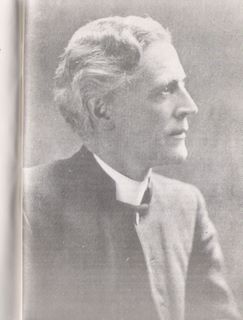
Rev. A. Douglas Brown
Though every denomination and mission work had powerful and successful evangelistic ministry taking place during this revival, we will mention two prominent evangelists in this story.
Rev. A. Douglas Brown
Douglas Brown was pastoring a Baptist church in South London at the time, and for four months God had been dealing with him about leaving his pastorate to take up evangelistic work. He was reluctant to do so, but he finally yielded and then God was able to powerfully use him.
John (Jock) Troup (25 years old in 1921)
Prior to WWI Jock Troup had worked as a cooper, a maker of barrels in which herring were packed for shipping. During the war he joined the Royal Naval Patrol Service. It was then that he made a commitment to Christ. At the close of WWI, Troup returned to his hometown of Wick, a premier herring port in Scotland, and again took up his trade as a cooper. In addition to his day job, he worked regularly with the Salvation Army and other mission work and began preaching wherever there was an open door.
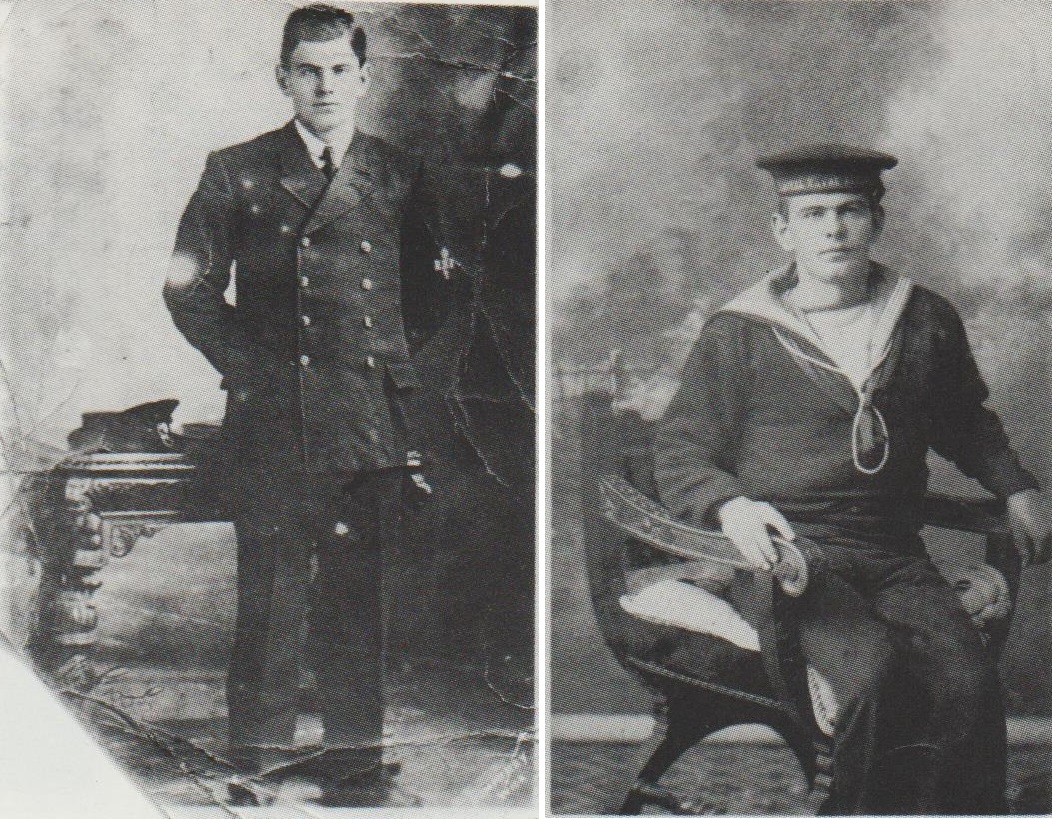
John (Jock) Troup – Royal Naval Patrol Service During WWI
Introduction – Spiritual Climate
Scotland was at this time experiencing a spiritual declension. WWI had recently concluded, and many young fisherman had returned from that war, godless and careless regarding their soul’s eternal welfare.
Extraordinary Prayer & Preparation for Revival
Pastor Hugh Ferguson of London Road Baptist Church in Lowestoft was grieved by the dancing and Sunday concerts that were being sanctioned by the town council. He was further disturbed when the council rejected the motion made by two council members to begin each council meeting with prayer.
Ferguson then began weekly prayer meetings. They were held on Monday evenings with an attendance of up to 90 people seeking God for a great manifestation of His power. This congregation prayed faithfully for two years. This prayer effort reached its peak in 1921.
Prayer for revival was also taking place in other locations.
The revival was preceded in every place by fervent prayer – sometimes for years. At the tiny village of Whinnyfold, prayer for revival had been going on since 1900.
In Cairnbulg there was a 6:00-9:30am prayer meeting every Sunday.
At Peterhead there was a 6:30am prayer meeting every Sunday.
Prayer caused expectancy to rise.
Not only prior to the revival, but all through it, prayer was the driving force behind this revival. For example:
At Findochty, some miles from Buckie, a divine spark has been fanned into a fierce flame. From 6:00pm to midnight, prayer meetings, conventions, and processions succeed each other.
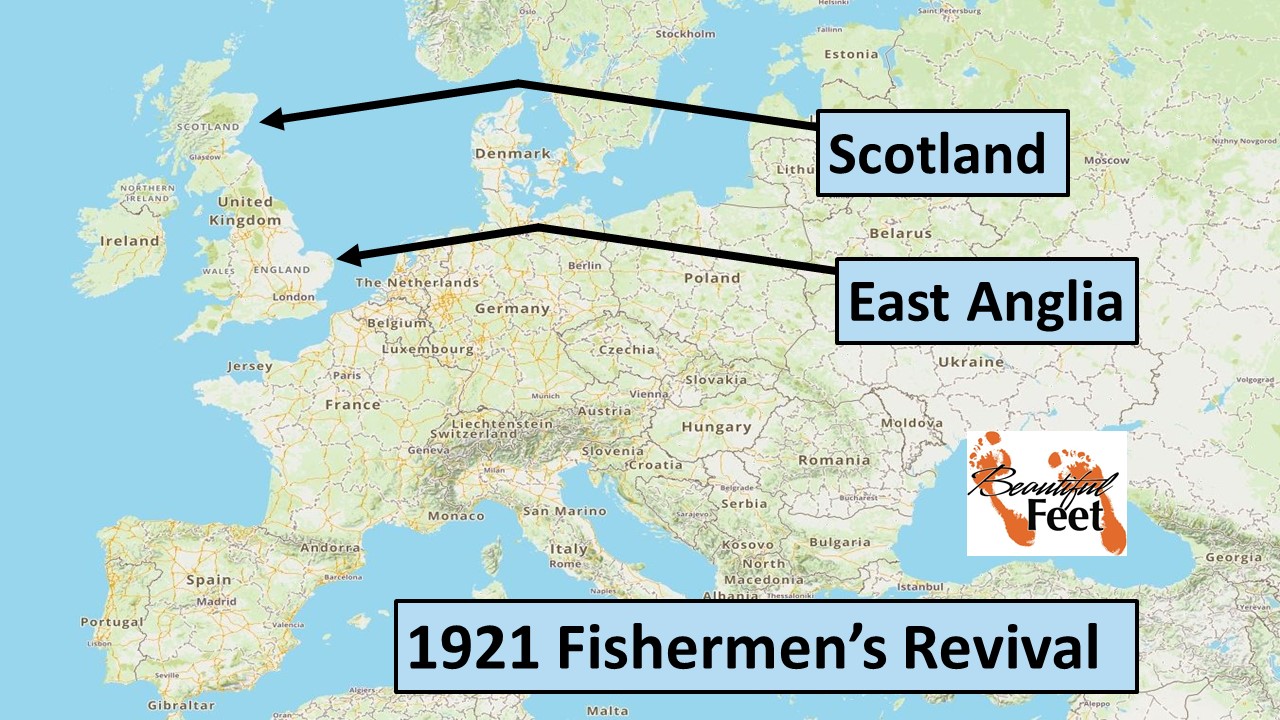
What Happened
To help spark a revival, Pastor Hugh Ferguson invited Douglas Brown, who at the time was pastoring Ramsden Road Baptist Church, Balham, London, to conduct a series of evangelical services in Lowestoft, at his London Road Baptist Church. Brown agreed and the dates were set for Monday-Friday, March 7-11, 1921.
Scheduled Revival Services Begin
On the opening night, Monday, March 7th, the 750-seat building was filled, as there was a spirit of expectancy.
On Tuesday evening, following Brown’s invitation for people to make a profession of faith in Christ, dozens of people came forward, and the movement began. The services at the London Road Baptist Church soon became too full and they repeatedly moved to larger and larger venues.
At times there were so many standing outside, wanting to gain entrance, that the pastor asked those who loved Jesus to go into an adjacent room to pray, so that those who were not Christians could come in and have a seat.
Tear Up the Program
Ferguson saw what the Holy Spirit was doing and, to yield to His lead, he tore up the program to make room for God’s will to be done. With the program being discarded, services continued through the end of March.
During the last week in March the meetings moved to the 1,100-seat St. John’s Church. The meetings were full, with people coming in from the surrounding districts. The final meeting took place on April 1st in St. John’s. There was great unity there among the churches of Lowestoft.
Conclusion of the Scheduled Revival
The scheduled revival services reaped a harvest of 500 souls, and the revival began to spread throughout East Anglia. Other congregations also began conducting their own revival services all throughout the fishing area of Yarmouth, as well as Ipswich, Norwich, Cambridge, and elsewhere.
Unscheduled Revival Continues
Brown returned to Lowestoft in May of 1921 to do a week of meetings in the villages surrounding the town. A newspaper reported that this week of meetings was even more powerful than those in March.
From that time on Brown continued ministering in town after town throughout East Anglia, seeing churches packed out, with people on the outside not able to get in, and conversions taking place regularly.
The Scottish Invasion
The Scottish fishing community followed the herring migration, so in the autumn of 1921, as they did every year, whole families left their homes in Scotland (thousands of people) and moved down the coast to the towns of Yarmouth and Lowestoft for the end of the fishing season. These were the herring fishermen and the women who gutted and packed the herring shipment.
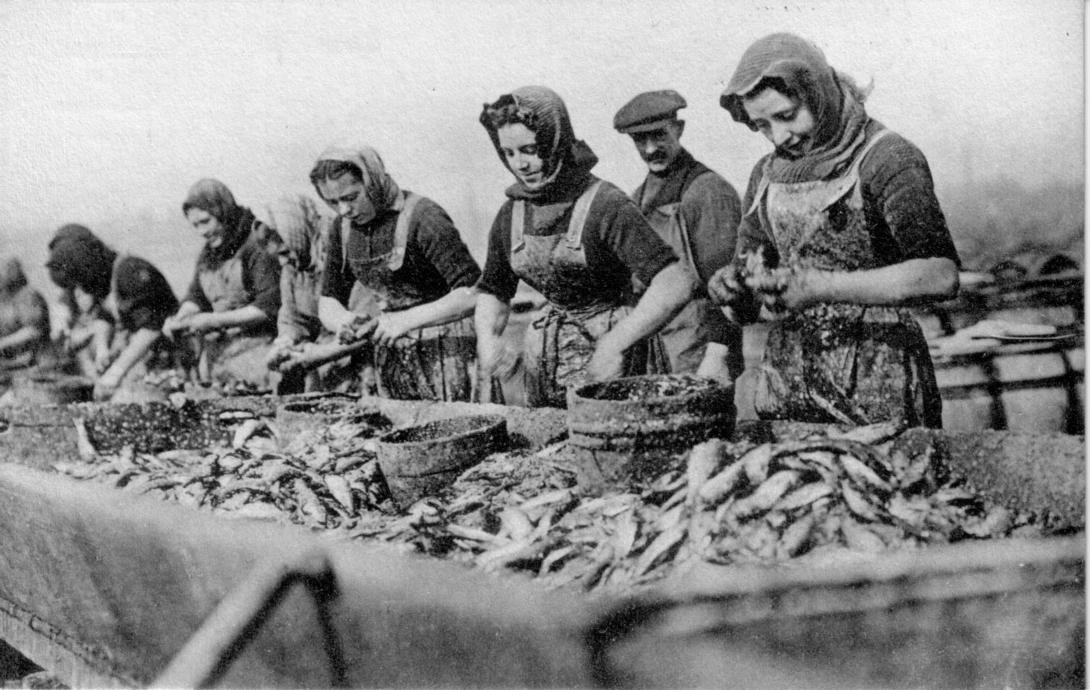
Scottish Girls Gutting Herring
Among those travelling down from Scotland to Yarmouth was Jock Troup, the barrel maker (cooper) from Wick. In addition to his day job as a cooper, he also conducted open-air evangelistic services.
On the third Saturday in October 1921, Troup held an open air meeting at the marketplace. At the conclusion of his sermon the Holy Spirit convicted many tough fishermen and women of their sin and they were overcome with a fear of God and an awareness of their sinfulness.
Many were thrown to the ground under that conviction of sin, and some described the scene with words similar to this:
The ground around me was like a battlefield with souls crying to God for mercy.
The people were not only agonizing over their own sin and need of a savior, they were also broken-hearted over their loved ones who were in need of salvation.
Some of the fisher girls spent the following day in torment, as they were resisting the Holy Spirit’s conviction power. On Monday morning they were not able to return to work because their knowledge of their lost spiritual condition prevented them from being able to function. The foreman needed these women on the job, so he called for Troup to come and give these girls spiritual counsel. After presenting Christ again to them, and these girls professing their faith in Christ, they were filled with joy and were then able to return to their jobs.
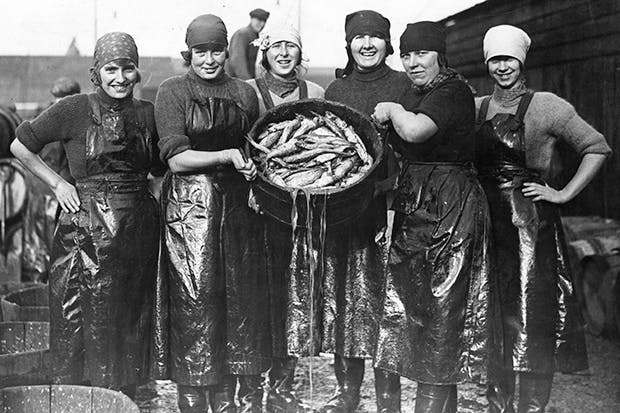
Women were employed to gut and pack the fish
Revival News Travels Fast
All of Scotland was now on fire as the news reached the families of the fishermen back home. The young converts had written home to tell of the mighty happenings in Yarmouth, describing their own experiences and pleading with their loved ones to come to Christ.
End of the Fishing Season – The Revival Spreads
At the peak of the fishing season there would be well over 700 boats based at East Anglia. At the end of the fishing season the boats sailed home to their respective Scottish ports. With these thousands of Scottish fishermen and women being present in Yarmouth and Lowestroft during the revival of 1921, they carried the revival back up north with them.
These Scottish workers had been praying during the revival for their families they had left behind, and when they returned the revival spread throughout the fishing ports of Scotland. As the boats sailed into the harbors the men on board were singing Gospel hymns, and those waiting on the piers joined with them in the singing.
Places such as Eyemouth, Port Seton, St. Monans, Peterhead, Fraserburgh, Portknockie, Buckie, and up to Wick witnessed scenes like these, and in many of these towns churches were greatly strengthened. Almost every Scottish church has these events as part of their history.
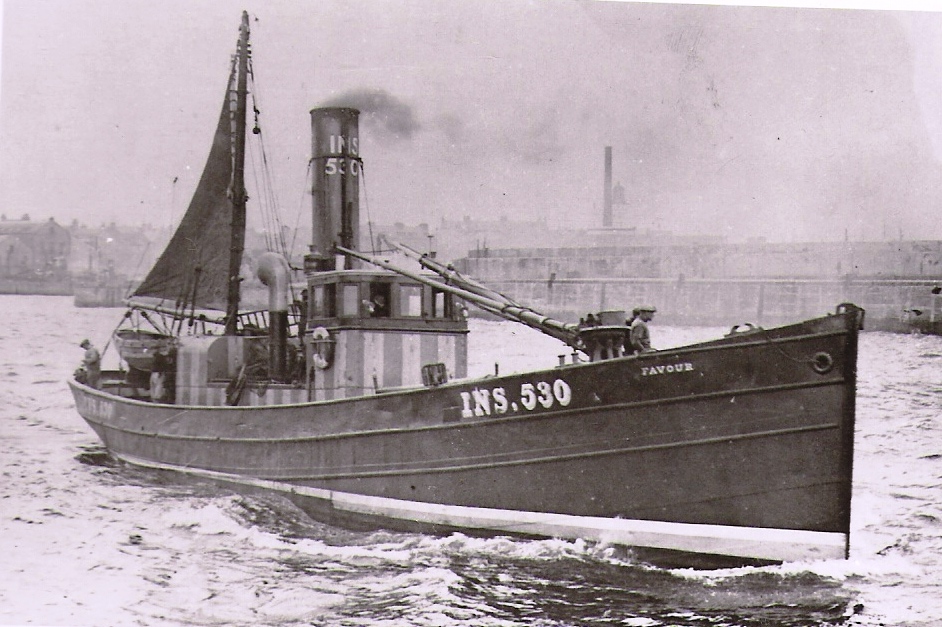
Herring Drifter (fishing boat)
After Troup was dismissed from his job at Yarmouth, he felt led to return to Scotland, where God had already been working through other evangelists.
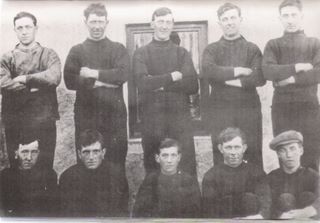
Men saved in Whinnyfold
In the town of Peterhead, there were meetings every night for six weeks and hundreds professed faith in Christ. Revival meetings were also held at Gardenstown, with packed buildings and souls saved every night. In Inverallochy and Cairnbulg, within two weeks’ time, there were 600 conversions out of a population of 1,500.
With the arrival of 1922, the revival did not diminish quickly. Practically all the fisher families in the small village of Whinnyfold were saved. A year later over 400 were saved in Portsoy. In nearby Portknockie, Cullen and Findochty there was similar blessing.

Some of the areas where the revival made the greatest impact.
Reports of the revival in Scottish fishing ports (December 1921):
The air is electric with revival enthusiasm these days.
[the revival is] like a ‘Flu’ and was spreading.
The Revival Spreads
The revival fires swept around the Scottish coast as many young evangelists worked with Jock Troup. This is how one person described the scene:
People thronging the streets were going to church; nine out of ten can be counted on being bound for a place of worship. Where the church should hold five hundred, a thousand or more attempted to gain entrance.
Churches were filled long before the start of the services. Prayer was spontaneous, without a break. Voluntary testimonies were brutally honest, coming from the lips of simple fishermen and women. They would passionately plead for those not yet converted to embrace Christ. It was most probable that the simple testimonies were more powerful than dozens of refined sermons.
The large Scottish cities of Glasgow, Aberdeen, and Dundee also experienced revival.
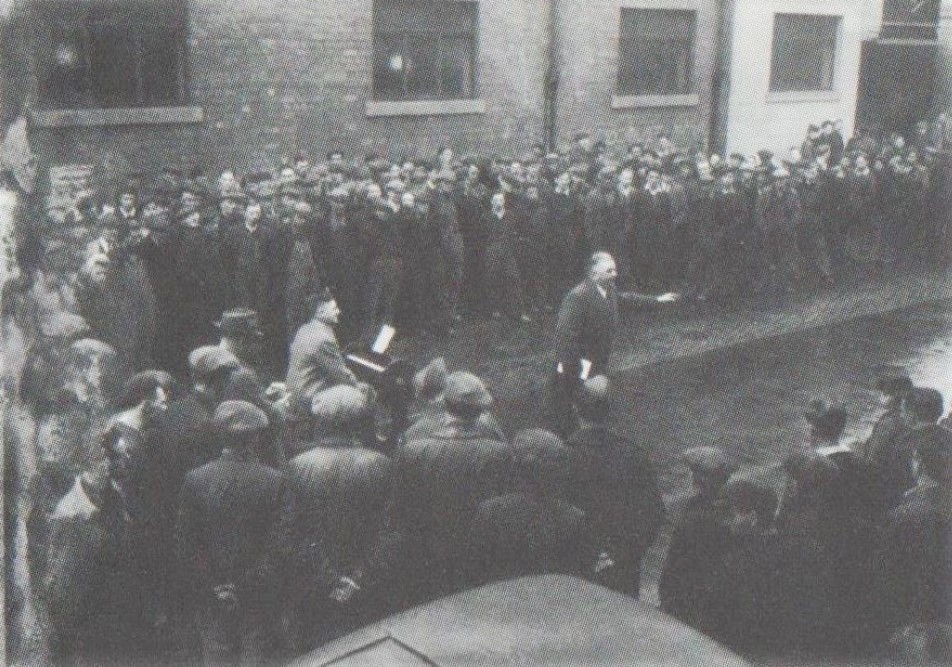
John (Jock) Troup — Open-Air Preaching
Clergy Blocked the Revival’s Wider Influence
As with every revival, it is commonly the minsters–the clergy–that come out to condemn the poor and simple people that get caught up in the “mass hysteria.” Some of the critical ministers said the revival was merely emotional outbursts and that it would quickly fade away.
Even when there were dramatic life transformations, the jealous religious leaders still had a hard time acknowledging that this was a genuine move of the Holy Spirit. This is a common situation in most revivals.
Fading Revival
The spirit of revival was still evident in 1931, but its fading impact was noted to have taken place sometime during 1922.
Results of the Revival
► So many young people were saved that the dance halls had to close.
► Gambling had disappeared.
► Tobacco and cigarettes had been destroyed.
► Cinemas were deserted.
► Pubs (public houses) practically deserted.
► From Findochty specifically, in the winter of 1921-1922, groups of young Christians would travel to neighboring villages and preach the Gospel with remarkable results.
A few conversion records:
► Wick – 400
► Brora – 200
► Burghhead – 92
► Buckie – 300
► Findochty – 115
► Portessie – 100
► Cullen – 79
► Cairnbulg – out of a population of 1,500, 600 were converted in 2 weeks.
► Peterhead – 242
► Arbroath – 100
► Dundee 600-700
► Pittenweem – 76
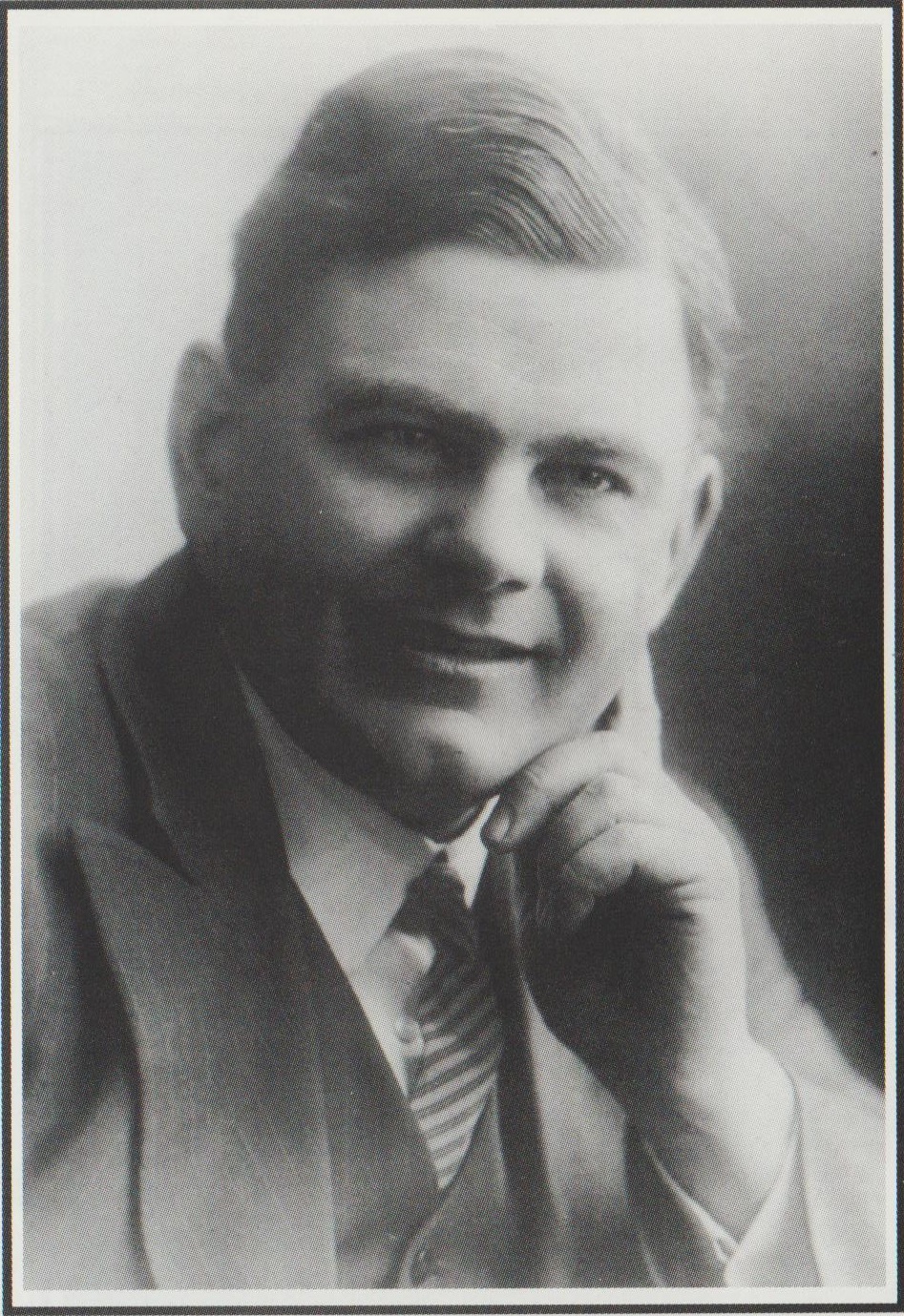 John (Jock) Troup
John (Jock) Troup
Sources
► A Forgotten Revival by Stanley C. Griffin
► Floods Upon the Dry Grounds by Jackie Ritchie
► Fishers of Men: The 1921 Religious Revival by Donald E. Meek
► REVIVAL: A People Saturated with God by Brian H. Edwards
► Revival Man, The Jock Troup Story by George Mitchell
► Our Beloved Jock by James A. Stewart
► Video: Jock Troup & The Fishermen’s Revival by Gary Wilkinson
Drifters (fishing boats of that era)
► The Herring Harvest (1925)
► Drifting (1940-1949)
History of the Region
► Kingdom of East Anglia
► East Anglia
Return to List of Revival Stories
Chet & Phyllis Swearingen
(260) 920-8248
romans1015@outlook.com
Beautiful Feet
P.O. Box 915
Auburn, IN 46706

